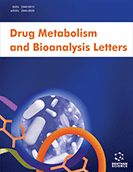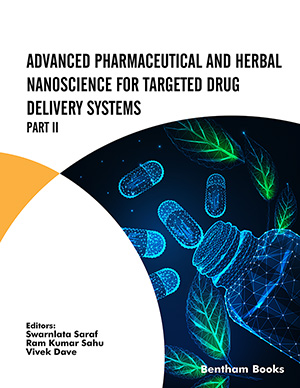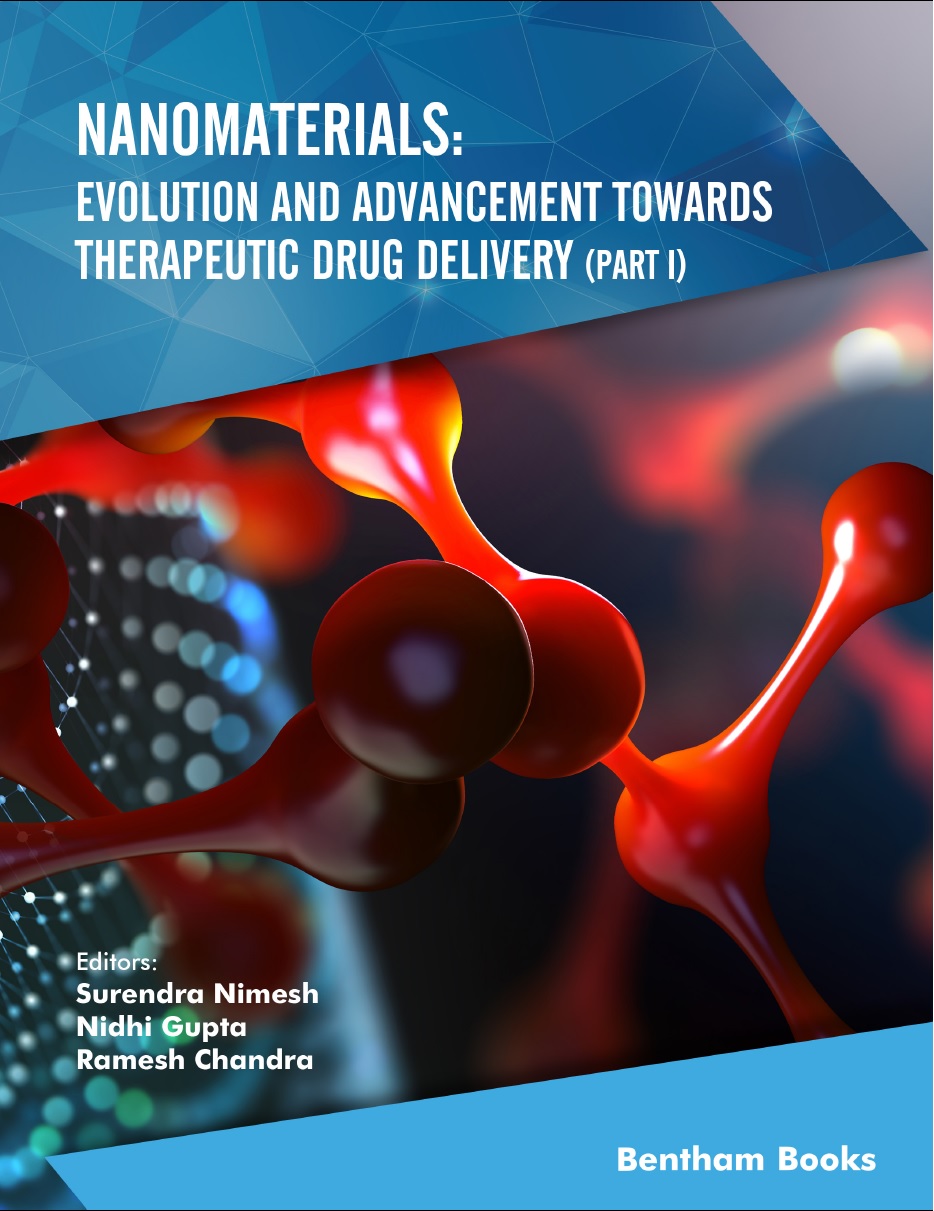Abstract
Breast cancer is the most prevalent cancer in women around the world, having a sudden spread nowadays because of the poor sedentary lifestyle of people. Comprising several subtypes, one of the most dangerous and aggressive ones is triple-negative breast cancer or TNBC. Even though conventional surgical approaches like single and double mastectomy and preventive chemotherapeutic approaches are available, they are not selective to cancer cells and are only for symptomatic treatment. A new branch called nanotechnology has emerged in the last few decades that offers various novel characteristics, such as size in nanometric scale, enhanced adherence to multiple targeting moieties, active and passive targeting, controlled release, and site-specific targeting. Among various nanotherapeutic approaches like dendrimers, lipid-structured nanocarriers, carbon nanotubes, etc., nanoparticle targeted therapeutics can be termed the best among all for their specific cytotoxicity to cancer cells and increased bioavailability to a target site. This review focuses on the types and molecular pathways involving TNBC, existing treatment strategies, various nanotechnological approaches like exosomes, carbon nanotubes, dendrimers, lipid, and carbon-based nanocarriers, and especially various nanoparticles (NPs) like polymeric, photodynamic, peptide conjugated, antibody-conjugated, metallic, inorganic, natural product capped, and CRISPR based nanoparticles already approved for treatment or are under clinical and pre-clinical trials for TNBC.
Keywords: Triple-negative breast cancer, human epidermal growth factor receptor 2 (HER2), progesterone receptor (PR), estrogen receptor (ER), nanoparticles, nanotechnology, targeted therapy.
[http://dx.doi.org/10.3892/ol.2021.12773] [PMID: 33986872]
[http://dx.doi.org/10.2174/1389200221666200303124946] [PMID: 32124694]
[PMID: 26855906]
[http://dx.doi.org/10.4161/cbt.10.10.13879] [PMID: 21057215]
[http://dx.doi.org/10.3892/ol.2016.4472] [PMID: 27313695]
[http://dx.doi.org/10.4103/1477-3163.90676] [PMID: 22279416]
[http://dx.doi.org/10.3389/fphar.2018.00909] [PMID: 30186165]
[http://dx.doi.org/10.4048/jbc.2017.20.2.150] [PMID: 28690651]
[http://dx.doi.org/10.1186/bcr767] [PMID: 15084238]
[http://dx.doi.org/10.1023/B:BREA.0000021038.97593.8b] [PMID: 15039595]
[http://dx.doi.org/10.1038/sj.bjc.6602787] [PMID: 16175185]
[http://dx.doi.org/10.3389/fonc.2020.00299] [PMID: 32211328]
[PMID: 31890196]
[http://dx.doi.org/10.1093/annonc/mds326] [PMID: 22987963]
[http://dx.doi.org/10.4103/1658-631X.112908]
[http://dx.doi.org/10.1038/35021093] [PMID: 10963602]
[http://dx.doi.org/10.1186/gb-2007-8-5-r76] [PMID: 17493263]
[http://dx.doi.org/10.1056/NEJMra1001389] [PMID: 21067385]
[http://dx.doi.org/10.1186/s13046-019-1443-1] [PMID: 31661003]
[http://dx.doi.org/10.1016/j.pharmthera.2021.107800] [PMID: 33421449]
[http://dx.doi.org/10.1016/j.jconrel.2020.10.001] [PMID: 33022330]
[http://dx.doi.org/10.1038/nrclinonc.2016.66] [PMID: 27184417]
[PMID: 29132557]
[PMID: 26175926]
[http://dx.doi.org/10.3390/ijms20061263] [PMID: 30871158]
[http://dx.doi.org/10.3390/pharmaceutics13020287] [PMID: 33671698]
[http://dx.doi.org/10.1517/14656566.2015.1032246]
[http://dx.doi.org/10.1007/978-981-15-1664-1_19]
[http://dx.doi.org/10.2174/1381612826666200116151522]
[http://dx.doi.org/10.1056/NEJMoa1612645] [PMID: 28564564]
[http://dx.doi.org/10.1158/1078-0432.CCR-04-2421] [PMID: 16115903]
[http://dx.doi.org/10.1016/j.cell.2004.12.040] [PMID: 15797377]
[http://dx.doi.org/10.1016/j.ajpath.2013.05.033] [PMID: 23920327]
[http://dx.doi.org/10.1002/smll.201601669]
[http://dx.doi.org/10.1002/cncr.24094] [PMID: 19156929]
[http://dx.doi.org/10.3389/fonc.2020.578095] [PMID: 33324554]
[http://dx.doi.org/10.3389/fmolb.2021.648663] [PMID: 34026830]
[http://dx.doi.org/10.3390/pharmaceutics13071050] [PMID: 34371740]
[http://dx.doi.org/10.1016/j.biomaterials.2013.09.043] [PMID: 24090836]
[http://dx.doi.org/10.1016/j.addr.2012.09.030]
[http://dx.doi.org/10.17795/ijcp-3966] [PMID: 27482328]
[http://dx.doi.org/10.3109/1061186X.2015.1051049] [PMID: 26061298]
[http://dx.doi.org/10.3389/fbioe.2021.680315] [PMID: 34150736]
[http://dx.doi.org/10.1039/D0BM00029A] [PMID: 32163070]
[http://dx.doi.org/10.1016/j.csbj.2021.04.036] [PMID: 34025931]
[http://dx.doi.org/10.1016/S1470-2045(08)70179-7] [PMID: 18639491]
[http://dx.doi.org/10.1007/s10552-009-9331-1] [PMID: 19343511]
[http://dx.doi.org/10.1016/j.canlet.2018.10.042] [PMID: 30419345]
[http://dx.doi.org/10.31557/apjcc.2020.5.2.87-94]
[http://dx.doi.org/10.1186/bcr2574] [PMID: 21050424]
[http://dx.doi.org/10.1038/modpathol.2016.39] [PMID: 26939876]
[http://dx.doi.org/10.1186/s13058-014-0490-y] [PMID: 25472854]
[http://dx.doi.org/10.1016/0092-8674(91)90633-A] [PMID: 1846319]
[http://dx.doi.org/10.1016/j.bbagen.2013.02.008]
[http://dx.doi.org/10.1038/oncsis.2017.14]
[http://dx.doi.org/10.1186/1471-2407-13-537] [PMID: 24209998]
[http://dx.doi.org/10.1371/journal.pone.0077425] [PMID: 24143235]
[http://dx.doi.org/10.1158/1078-0432.CCR-14-0432] [PMID: 25208879]
[http://dx.doi.org/10.1101/gad.1653708] [PMID: 18483217]
[http://dx.doi.org/10.1016/j.ejca.2012.02.062] [PMID: 22425263]
[http://dx.doi.org/10.1186/s13058-016-0690-8] [PMID: 26975198]
[http://dx.doi.org/10.1002/jcb.23350] [PMID: 21898546]
[http://dx.doi.org/10.1038/onc.2011.145] [PMID: 21532620]
[http://dx.doi.org/10.1073/pnas.0911220107] [PMID: 20194742]
[http://dx.doi.org/10.1097/MPH.0000000000000329] [PMID: 25811750]
[PMID: 26779371]
[http://dx.doi.org/10.1016/j.pharmthera.2016.12.001] [PMID: 27919797]
[http://dx.doi.org/10.1007/s13277-013-1589-y] [PMID: 24420152]
[PMID: 28386324]
[http://dx.doi.org/10.1159/000503311] [PMID: 31707383]
[http://dx.doi.org/10.1038/nature11412] [PMID: 23000897]
[http://dx.doi.org/10.18632/oncotarget.10858] [PMID: 27474173]
[http://dx.doi.org/10.1177/1947601911432496] [PMID: 22593799]
[http://dx.doi.org/10.1158/1078-0432.CCR-09-2574] [PMID: 20068110]
[http://dx.doi.org/10.1186/1471-2407-9-298] [PMID: 19706168]
[http://dx.doi.org/10.1126/science.1179386] [PMID: 19726788]
[http://dx.doi.org/10.1038/nrc2503] [PMID: 18813320]
[http://dx.doi.org/10.1002/cam4.833] [PMID: 27539549]
[PMID: 22866163]
[http://dx.doi.org/10.1111/bph.13211] [PMID: 26040571]
[http://dx.doi.org/10.1038/bjc.2017.116] [PMID: 28441382]
[http://dx.doi.org/10.1158/0008-5472.CAN-08-3389] [PMID: 19147570]
[http://dx.doi.org/10.1158/1078-0432.CCR-09-0317] [PMID: 19567590]
[http://dx.doi.org/10.3892/ol.2020.11274] [PMID: 32194678]
[http://dx.doi.org/10.1016/j.critrevonc.2016.05.010] [PMID: 27263934]
[http://dx.doi.org/10.1016/j.nbt.2017.08.004]
[http://dx.doi.org/10.1177/1066896911427035] [PMID: 22084425]
[http://dx.doi.org/10.1158/0008-5472.CAN-05-1069] [PMID: 16166334]
[http://dx.doi.org/10.18632/oncotarget.8381] [PMID: 27029061]
[http://dx.doi.org/10.1373/clinchem.2015.246686] [PMID: 26721293]
[http://dx.doi.org/10.1007/s12015-007-0023-5] [PMID: 17873349]
[http://dx.doi.org/10.1146/annurev-biophys-083012-130338] [PMID: 23495970]
[http://dx.doi.org/10.1038/nature04870] [PMID: 16724054]
[http://dx.doi.org/10.21873/anticanres.11151] [PMID: 27793889]
[http://dx.doi.org/10.1002/jcp.20785] [PMID: 17001676]
[http://dx.doi.org/10.1128/MCB.17.7.3629] [PMID: 9199297]
[http://dx.doi.org/10.1038/onc.2013.64] [PMID: 23474754]
[http://dx.doi.org/10.1371/journal.pone.0106966] [PMID: 25184276]
[http://dx.doi.org/10.1158/0008-5472.CAN-04-4017] [PMID: 15833852]
[http://dx.doi.org/10.1158/0008-5472.CAN-12-4524-T] [PMID: 23633491]
[http://dx.doi.org/10.1038/s41467-017-01829-1] [PMID: 29158506]
[http://dx.doi.org/10.1158/1078-0432.CCR-13-1081] [PMID: 24664307]
[http://dx.doi.org/10.1016/j.bbamcr.2010.12.012] [PMID: 21167873]
[http://dx.doi.org/10.1016/j.febslet.2014.06.025] [PMID: 24937142]
[http://dx.doi.org/10.1016/j.ctrv.2013.03.009] [PMID: 23643661]
[http://dx.doi.org/10.1128/MCB.00480-14] [PMID: 25202123]
[http://dx.doi.org/10.1530/ERC-16-0482] [PMID: 28148541]
[http://dx.doi.org/10.1002/smll.201700544]
[http://dx.doi.org/10.3390/biomedicines6030073] [PMID: 29932151]
[http://dx.doi.org/10.1186/bcr2644] [PMID: 20863366]
[PMID: 34859741]
[http://dx.doi.org/10.4103/0974-2077.63301] [PMID: 20606992]
[http://dx.doi.org/10.1016/j.surneu.2003.09.036] [PMID: 14984987]
[http://dx.doi.org/10.1016/j.msec.2016.04.044] [PMID: 27157759]
[http://dx.doi.org/10.1016/j.msec.2018.10.071] [PMID: 30573243]
[http://dx.doi.org/10.1590/S1679-45082016RB3475] [PMID: 27074238]
[http://dx.doi.org/10.3109/10717544.2015.1092183] [PMID: 26430913]
[http://dx.doi.org/10.1080/10717540590968855] [PMID: 16253954]
[http://dx.doi.org/10.3109/10717544.2013.834412] [PMID: 24024505]
[http://dx.doi.org/10.1021/nn800275r] [PMID: 19206374]
[http://dx.doi.org/10.1016/j.bmcl.2015.06.038] [PMID: 27499453]
[http://dx.doi.org/10.1080/1061186X.2018.1523418] [PMID: 30207742]
[http://dx.doi.org/10.1038/srep26895] [PMID: 27241877]
[http://dx.doi.org/10.1016/j.jconrel.2020.07.003] [PMID: 32653502]
[http://dx.doi.org/10.1155/2013/578290] [PMID: 24195076]
[http://dx.doi.org/10.1038/ncomms6988] [PMID: 25612916]
[http://dx.doi.org/10.1021/nn402043c] [PMID: 23829293]
[http://dx.doi.org/10.1155/2018/2058613]
[http://dx.doi.org/10.1016/j.electacta.2016.03.198]
[http://dx.doi.org/10.1016/j.biomaterials.2014.08.033] [PMID: 25212524]
[http://dx.doi.org/10.3390/nano10030455] [PMID: 32143286]
[http://dx.doi.org/10.1016/j.biomaterials.2013.11.083] [PMID: 24345736]
[http://dx.doi.org/10.1158/0008-5472.CAN-12-3801] [PMID: 23633482]
[http://dx.doi.org/10.1021/acs.molpharmaceut.5b00900] [PMID: 26832839]
[http://dx.doi.org/10.1002/pros.21224] [PMID: 20607721]
[http://dx.doi.org/10.1016/j.jconrel.2019.12.005] [PMID: 31830541]
[http://dx.doi.org/10.1016/j.ijpharm.2017.06.026] [PMID: 28619457]
[http://dx.doi.org/10.1016/j.ejpb.2017.07.003] [PMID: 28694161]
[http://dx.doi.org/10.1351/PAC-REC-10-12-04]
[http://dx.doi.org/10.2174/2211550104666151008213153]
[http://dx.doi.org/10.1016/j.biomaterials.2013.10.011] [PMID: 24144908]
[http://dx.doi.org/10.1016/j.fjps.2018.06.001]
[http://dx.doi.org/10.1016/j.nano.2019.04.006] [PMID: 31055077]
[http://dx.doi.org/10.2147/IJN.S179095] [PMID: 30323596]
[http://dx.doi.org/10.1016/j.bioactmat.2021.02.037] [PMID: 33778204]
[http://dx.doi.org/10.1016/j.jconrel.2014.11.011] [PMID: 25445694]
[http://dx.doi.org/10.1016/j.ijpharm.2014.06.058] [PMID: 24992317]
[http://dx.doi.org/10.1016/j.nano.2013.10.006] [PMID: 24200524]
[http://dx.doi.org/10.4155/fdd-2019-0005] [PMID: 31448368]
[http://dx.doi.org/10.4172/2157-7439.1000390]
[http://dx.doi.org/10.1155/2018/4924186]
[http://dx.doi.org/10.1016/j.jphotobiol.2012.05.014] [PMID: 22722055]
[http://dx.doi.org/10.1016/j.colsurfb.2014.02.038] [PMID: 24657613]
[http://dx.doi.org/10.1007/s10856-015-5380-z] [PMID: 25589205]
[http://dx.doi.org/10.1021/nn3044066] [PMID: 23289892]
[http://dx.doi.org/10.3390/cancers12010187] [PMID: 31940937]
[http://dx.doi.org/10.1016/j.omtn.2017.03.007] [PMID: 28624192]
[http://dx.doi.org/10.1155/2015/182835] [PMID: 25883943]
[http://dx.doi.org/10.1159/000443404]
[http://dx.doi.org/10.3390/cancers10100346] [PMID: 30248941]
[http://dx.doi.org/10.1021/acsnano.7b01522] [PMID: 28414916]
[http://dx.doi.org/10.1016/j.bbrc.2017.08.002] [PMID: 28780353]
[http://dx.doi.org/10.3109/1061186X.2013.796955] [PMID: 23679865]
[http://dx.doi.org/10.1038/srep35267] [PMID: 27731405]
[http://dx.doi.org/10.1021/mp400311j] [PMID: 23927416]
[http://dx.doi.org/10.1038/srep34053] [PMID: 27725731]
[http://dx.doi.org/10.1016/j.ijbiomac.2018.12.003] [PMID: 30521927]
[http://dx.doi.org/10.1002/adbi.201800132] [PMID: 32832592]
[http://dx.doi.org/10.1039/D0BM01164A] [PMID: 33332490]
[http://dx.doi.org/10.1002/pat.4538]
[http://dx.doi.org/10.1021/acs.bioconjchem.6b00569] [PMID: 27798829]
[http://dx.doi.org/10.1021/acs.nanolett.7b05263] [PMID: 29473753]
[http://dx.doi.org/10.1016/j.bbrc.2017.05.042] [PMID: 28495530]
[http://dx.doi.org/10.1002/adfm.201701093]
[http://dx.doi.org/10.1002/adfm.201806620]
[http://dx.doi.org/10.1080/10717544.2019.1701141] [PMID: 31818156]
[http://dx.doi.org/10.1002/adfm.201603381]
[http://dx.doi.org/10.2147/IJN.S165109] [PMID: 30254439]
[http://dx.doi.org/10.3389/fbioe.2018.00110] [PMID: 30159310]
[http://dx.doi.org/10.1016/j.actbio.2019.05.018] [PMID: 31096042]
[http://dx.doi.org/10.1016/j.actbio.2018.09.040] [PMID: 30267887]
[http://dx.doi.org/10.1016/j.jconrel.2015.08.050] [PMID: 26341694]
[http://dx.doi.org/10.1016/j.ijbiomac.2017.10.113] [PMID: 29055700]
[http://dx.doi.org/10.3390/molecules25235649] [PMID: 33266162]
[http://dx.doi.org/10.1016/j.actbio.2017.08.034] [PMID: 28859899]
[http://dx.doi.org/10.1080/10717544.2019.1576801] [PMID: 30957572]
[http://dx.doi.org/10.1021/acs.molpharmaceut.8b01157] [PMID: 30698975]
[http://dx.doi.org/10.1016/j.biomaterials.2020.120645] [PMID: 33453633]
[http://dx.doi.org/10.1016/j.jiec.2019.06.050]
[http://dx.doi.org/10.1002/advs.201600124] [PMID: 28105390]
[http://dx.doi.org/10.3390/biom9110735] [PMID: 31766246]
[http://dx.doi.org/10.1016/j.biomaterials.2015.05.006] [PMID: 25988725]
[http://dx.doi.org/10.18632/oncotarget.5692] [PMID: 26517810]
[http://dx.doi.org/10.3390/pharmaceutics5020353] [PMID: 24244833]
[http://dx.doi.org/10.1038/sj.bjp.0707224] [PMID: 17401442]
[http://dx.doi.org/10.2147/IJN.S187089] [PMID: 30538458]
[http://dx.doi.org/10.1021/acsabm.0c01336] [PMID: 33954285]
[http://dx.doi.org/10.1021/acsnano.6b08731] [PMID: 28165223]
[http://dx.doi.org/10.18494/SAM.2020.2741]
[http://dx.doi.org/10.3390/nano8110935] [PMID: 30428608]
[http://dx.doi.org/10.1590/S0103-97332009000200015]
[http://dx.doi.org/10.1016/j.biomaterials.2016.10.053] [PMID: 27829203]























